Welcome to November. If this weeks finds you looking for a quiet place with the best aromatherapy on the planet, go to the kitchen, right now, and make these. You will feel better.
While the biscuits bake, I encourage you to read the lengthy, difficult, possibly controversial essay which follows. It’s something I wrote in 2016 but recently updated. It chronicles the ways which I’ve decided to engage with the meat that reaches our table here in Vermont. The deal with the Curio is that I write about what’s close to my heart. Baked, or not. Difficult, or not. So, here it is, here I am. As always, I appreciate your support.
Martin
These are butter biscuits made special in three specific ways.
First, more butter. Increasing the quantity of butter to equal the weight of flour means they are as tender as possible, with extra crispy bottoms. If the mere smell of these baking doesn’t make your insides swirl in the best way possible, get your pulse checked. They are bready and crisp, toasty and the best biscuits I’ve ever eaten.
Second, rather than using all white flour or the bleached option that people love south of the Mason-Dixon, I’m blending in some whole grain for more flavor. So, pick a whole grain of your choice and we’ll use that for half the total flour amount. You’ll be surprised how much flavor it adds.
Third, I’m using ripe (overripe) sourdough culture for hydration. You’ve seen me do this before in pie crusts, puff pastry, scones, and cornbread. Here, unlike sourdough bread, we don’t need the leavening capacity of the culture, we’re merely taking the flavor components, and the side benefits of its acidity which helps the baking powder do its job. The result is an aromatic hybrid of sourdough and buttery biscuit aromas.
The gist of the recipe is to use equal parts dry (flour), wet (sourdough culture, fed at 100% hydration and set to ripen), and fat (here, I’m using butter — if you have another fat that you like, use that). To that foundation we’ll also add some leavener and a little salt. That’s it. The recipe below makes four medium-small biscuits, if you want eight biscuits, double it. Or sixteen? Quadruple. Just keep the ratio of flour to butter to culture intact and increase the powder and salt, accordingly.
The Equal Parts Sourdough Biscuit
Yield: Four 2” biscuits, double all amounts for eight biscuits (trust me that 8 will be necessary)
All-purpose flour, 57g
Whole wheat flour, 57g (I’m using the King Arthur climate blend but other whole grain flours like whole rye, wheat, spelt, or even einkorn should be fine for substitutions, just keep an eye on the hydration and if you need a little extra sourdough for moisture, add it.)
Salt, fine, 4.5g (¾ t)
Baking powder, 8g (2 t)
In a medium bowl, combine the dry ingredients. Freeze briefly to chill.
Butter, unsalted, cold, 113g (one stick)
Cut the cold butter into pats or slices, roughly ¼” wide.
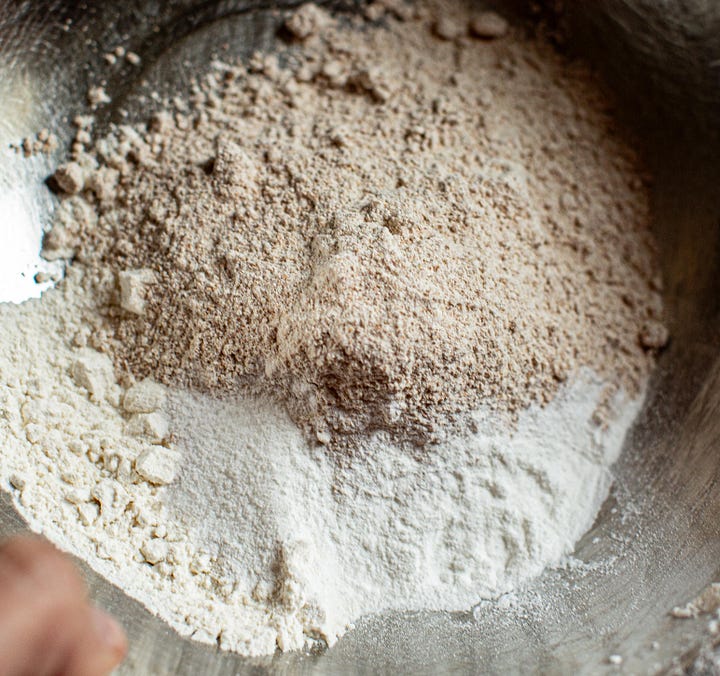
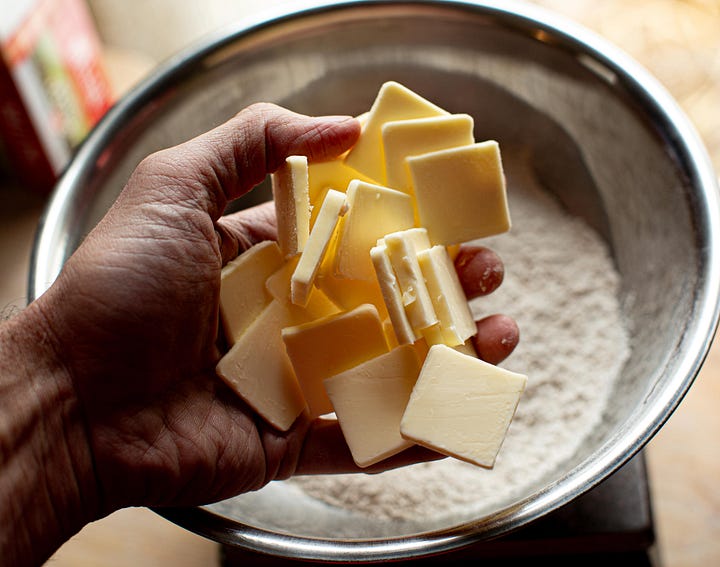
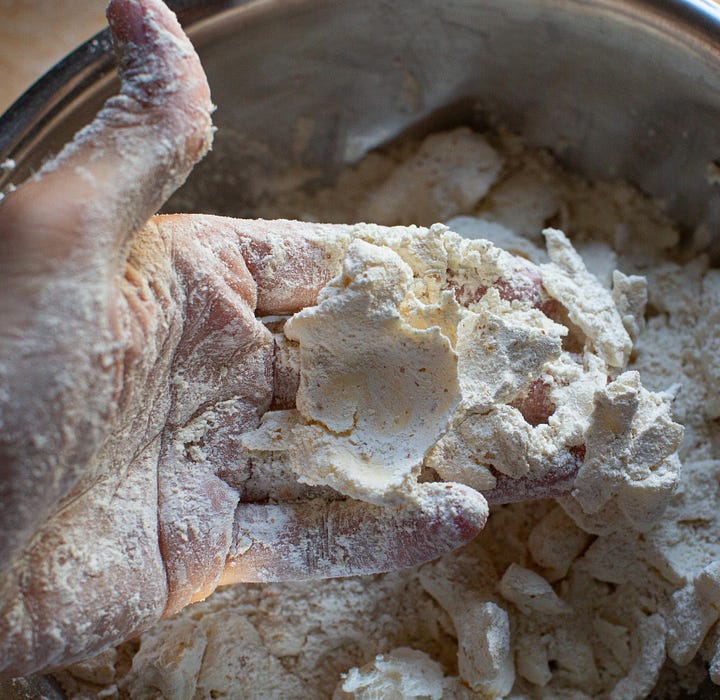
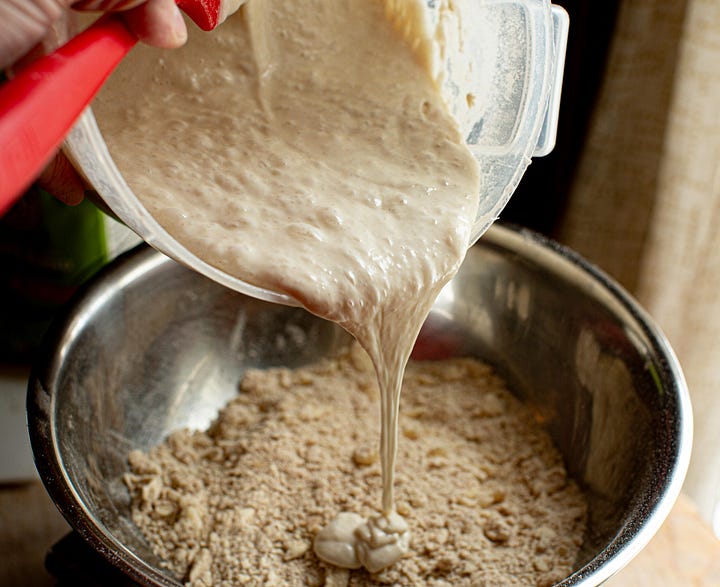
Add the butter to the chilled dry ingredients and toss to coat. Then, working the butter between your thumb and forefingers or pressing the pieces against the bottom of the bowl, massage the butter into the dough, leaving some larger and smaller pieces.
Sourdough culture, very ripe or discard, 113g (The culture is best if it has risen, then fallen, thus lacking any structure. If using healthier, or younger culture, use a little more in order to fully hydrate the flour. Note that the culture I’m using has been fed equal parts flour and water by weight and then sat in a comfy spot for 12 to 24 hours.)
Pour the sourdough onto the flour and butter mixture and stir briefly with a wooden spoon or large spatula to combine. The mixture will resist incorporation, clumping in spots while remaining floury in other parts of the bowl. Using your hand, move the ingredients around, pressing against the sides and bottom, working until the mixture mostly clumps together.
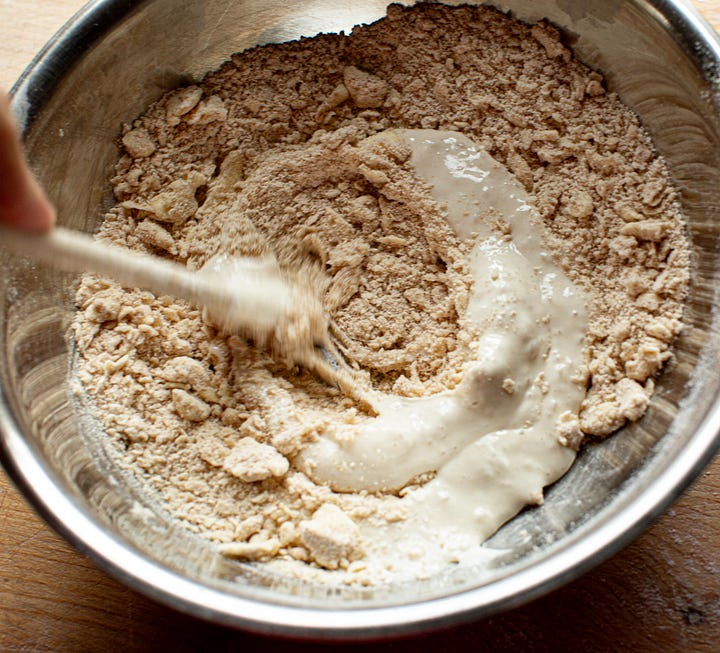
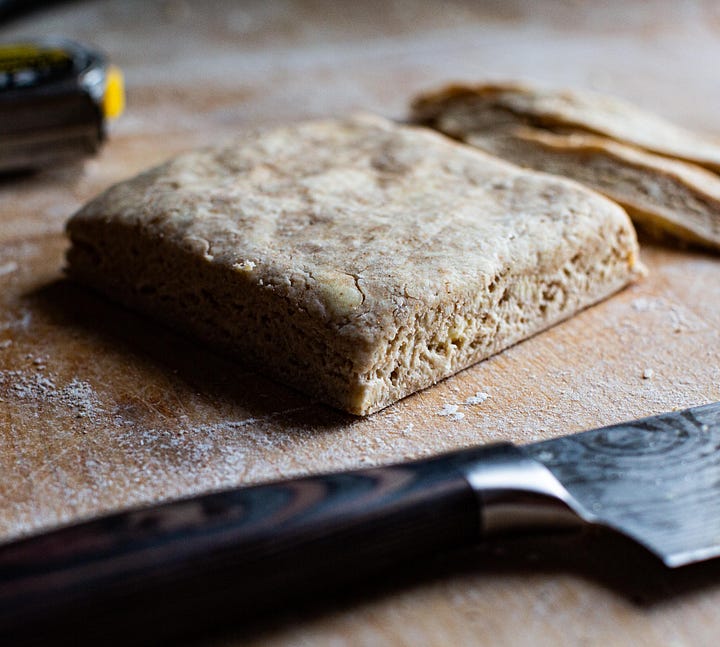
Move the dough to your work surface and press into a 4.5” square (or bigger if you’re doubling). Compress with your hands to form into a solid mass about 1” thick.
For biscuits with the best, most even-rising forms, using a very sharp knife to cut 1/8” off each side. This will help them to look more uniform and rise straight up. You don’t have to do this — it won’t necessarily change the flavor or eating quality, it’s only about aesthetics.
After trimming the outside edges, cut the square into four pieces, yielding four 2” square biscuits. Form the trimmings into a single small biscuit which will be your baker’s reward before calling anyone else to the table to eat.
Chill the biscuits while the oven preheats to 425°F with a rack on a rung in the upper third of the oven.

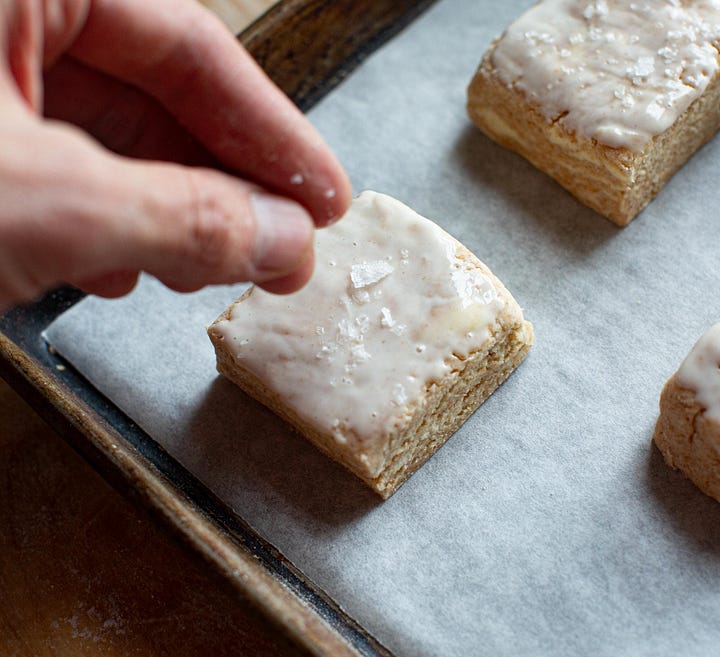
Sourdough culture, 2 t
Cream or milk, 2 t
Sugar, 1/2 t
Once the oven is fully preheated, prepare a glaze for the biscuits. Thin a little sourdough culture with cream or milk then add a few pinches of sugar. Stir until homogenous then brush onto the chilled biscuits, tops only. (One note here, I like to flip the biscuits after chilling as the bottom is always smoother than the top.) As the biscuits bake, the glaze adds an additional layer of flavor.
Garnish with coarse salt and bake for 15 to 18 minutes, keeping an eye on them as everyone’s oven is different. When the tops are colored and a slight shade beyond golden in spots, remove and let them and cool briefly before serving.
And don’t forget, while the biscuits bake, there’s an essay, below.
Butter Beans and Venison Ham (2016)
In the spring of this year my three kids and I piled into the car and drove south out of town on Route 5. After a few miles we took a sharp right turn across from the town dump and bumped, up and up, climbing to views of the valley below us where the wide Connecticut river made its way oceanward with mud season melt.
We were headed to Sunrise Organic Farm for the annual shearing of Sue and Chuck Wooster’s flock, a medium-sized herd of long-haired Navarro Churro and Dorset sheep. Most of the ewes had already given birth, but a few remained, literally sticking out in the crowd.
The sheep were held in close quarters in a corral on the east side of the barn, sorted with mothers on one side and lambs on the other of a make-do fence. The separation created a versicle and response: “I want milk!” and, “Where are you!?” As we entered the corral through the old dairy door the wall of sound was so loud that the kids instinctively ducked their heads.
Our role that day, as directed by Chuck’s shearer, was for me to straddle the ewes and horn-hold them while one of the kids delivered a thick squirt of permethrin (a deworming product) to each neck after shearing. Then we’d pass them to Chuck, who was giving pedicures to their dirty hooves with large metal snips. After the farm-style spa treatment, the ewes were reunited with the waiting lambs. An audience of curious hens roosted on the corral rails, taking it all in.
Sunrise Farm is the right name for this place. Sitting on a grassy bench bordered by hardwood forests, open views extend south to Mt. Ascutney, east to the river, and north to the snowy peaks of the White Mountains. Fields receive the sun as it arcs overhead, lighting everything, dawn to dusk. But it could also be called Full Plate Farm, as everything here — plump chickens, egg-laying hens, muddy pigs, shorn sheep, sweet honey from bees, maple syrup, and organic vegetables — is headed to tables.
As a baker, the scene at Sunrise resonates with my own trade which is in the midst of a renaissance. We are going back to roots and craft, back to hand-shaped loaves and milling, and back to talking about where grain comes from. We want to hear about this year’s crop and we want our breads to carry the character of the field to the mill and onward, through our hands and ovens, all the way to our community. We are more connected than ever to the provenance of our loaves.
As we wrestled our way through the flock, my middle child Anthem asked a question: Would the lambs be slaughtered? She already knew the answer. The question was more of an interrogative, placing emphasis on the dilemma of it all. Beautiful animals — living, breathing things — why would we harvest them?
Well, we eat meat. It rides on plates with vegetables from the garden or Chuck’s farm and bread from my own hands. At Sunrise, not only do animals provide a locally-sourced meat option for Chuck’s CSA members, their manure is also an integral part of a regenerative farming system which cycles nutrients through the animals, back to the soil, and onward into new vegetables or grass for grazing. If you’re not using manure for fertilizer, you’re often using petrochemical-based inputs.
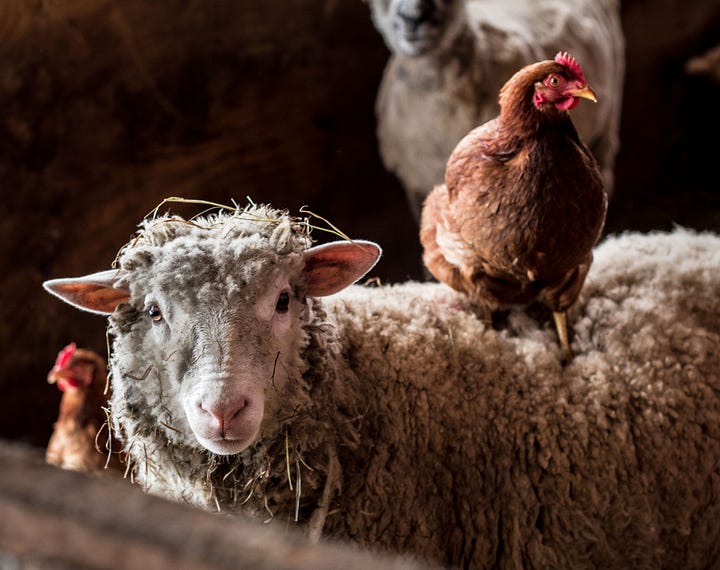
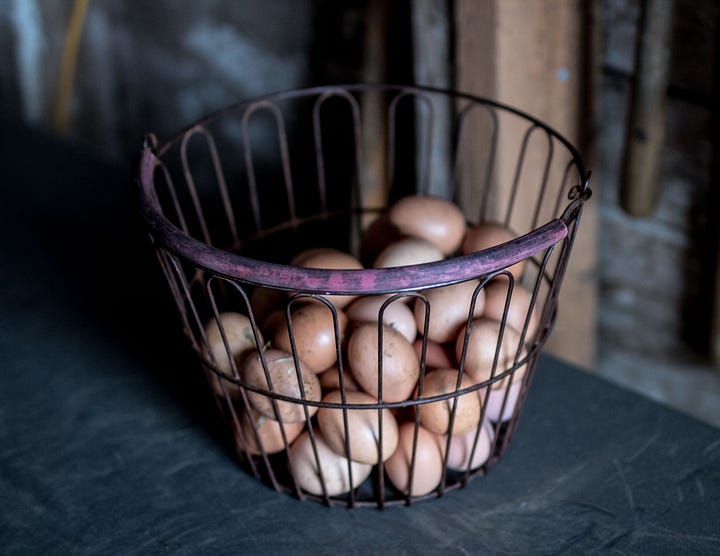
With these Sunrise connections — farmer, farm, field, and food — present as ideals, I began to consider how we might bring this example to our own table. We started with laying hens and modeled Chuck’s system, using their composted manure in our garden. We delighted in each trip to the coop to gather precious eggs. The kids painted chicken toenails and made snowshoes for them in winter. We cried rivers when they were taken by predators or illness. And, following the idea further, using the example of Chuck and many others in our rural state, I began to consider another large step towards connection with the food on our table. I decided to start hunting.
Maybe at this point I feel a need to pause and ask you, dear reader, to adopt a certain amount of amnesia related to some of the negative connotations with hunting, hunters, and the cultural baggage attached to this sector. In my own path, I had to do the same. I narrowed my focus to the aspects which relate directly to what I eat, the quality of life for the animals (in the case of meat), and the impact of my choices on our environment. Back to it.
With the loss of large predators in Vermont, our native white-tailed deer population has no effective controls beyond bad winters, car strikes, and a small amount of predation. While overpopulation isn’t an issue to the degree that it is in much of the country, with effects ranging from disease, to malnourishment, and environmental impacts (over-browsing causes documented issues with forest regeneration), the population does require management and hunters remain our best option. And, if, in the process of improving the quality of both the deer population and our environment we can eat organic, lean, healthy meat, that decision feels right to me. So that’s how it started.
But there is a big distance between walking the meat aisle with a shopping cart and entering the woods with a long gun or bow. On the meat aisle the choice is relatively easy. Natural sits next to free range, grass fed, conventional, or organic. Pick the cut you want and walk out the door with a package of something that matches your values, recipe, or pocketbook, with a minimum of conflict.
Entering the woods requires a different sort of navigation. As I considered it, I had a long list of feelings to confront. I wasn’t raised hunting, and, like everyone else who’s lived in the US in the past 40 years, it’s clear that guns have almost nothing to do with food. In most use cases, they create more problems than they solve. But maybe I could be different? Maybe I could hunt in a way that brought my own ethics to it? Fortunately, I had Chuck as an example of someone with a deep respect for animals, passion for the environment, and a commitment to conservation, at my side from the outset. If, holding everything in his heart at once, he felt that being out there was the right decision, I didn’t need to examine it any further for myself. And so, in spite of the messy emotions of it all, I began.
I got a deer rifle, then, on a trip to the general store I plopped down my money and left with a box of shiny bullets and a gallon of milk. I took my hunter’s safety test and passed the in-person field day practical which included lessons on gun safety and a marksmanship test. I sighted my rifle with Chuck on a cold November afternoon at the farm, shooting at a paper plate 50 yards away. We checked our accuracy with binoculars, made adjustments and, with that, in all practical terms, I was ready to hunt.
Opening day was bitterly cold. I walked in under a sky so clear and dark, yet bright with stars, that I didn’t need a headlamp. I nestled down in a bed of frost-beaten ferns just off the intersection of two old logging roads and waited for the day and whatever it would bring. As I sat, darkness lifted, lightening to blue-gray as chickadees celebrated in buzzing arcs on a mid-air race track above my head. And nothing happened.
This is hunting, I thought. Sitting, quiet, breathing, listening, watching. After two hours I had no feeling in my hands or feet, and decided to move to a south-facing slope to warm up. I knew a thin trail which traversed a very steep hardwood slope which deer used to travel down to the Ottauquechee River, hundreds of feet below. As I sat on the ribbon of flat trail, oblivious to almost everything except my aching hands, I heard movement above me, and froze, as my ears tried to assess the noise as either the hop of a squirrel or the step of a white tail deer on crunchy oak leaves.
I glimpsed a doe trotting down the drainage -— it is not legal to take a doe during rifle season and I couldn’t see the second animal but could tell that something followed her. After they passed, the quiet returned. Squirrels resumed their movement. Chipmunks darted from hole to hole, ferrying acorns to winter storehouses. The sun cut waves of steam rising off me.
I eventually warmed and, lying back against the steep slope, was ready to close my eyes. But then, more heavy movement and the sound of animals running came from below me, over the nose of a rise, out of view.
Adrenaline surged, my heart banged like a hammer — something large was running directly towards me, up the slope. A doe came into view first, and directly behind her, I could see antlers. I raised my gun, already shaking inside. The doe turned and the buck followed, putting him in a perfect broadside position for a clean shot. I squinted through the scope and found him, placing my crosshairs. He paused, I squeezed the trigger, it wouldn’t budge. In my rush I had forgotten to take off the safety. I quickly released it, shouldered the gun, and pulled the trigger again, this time with a deafening explosion and recoil. My ears rang, smoke filled the air, both animals scattered. I was sure I had missed. But, in a matter of seconds the buck raised on hind legs and dropped, a bullet through the heart.
I waited for a few minutes, trying to breathe but still shaking. Thinking back to hunter’s safety advisories, I watched for signs of life but saw none. I eventually climbed down to the spot where he lay, holding trees to steady myself on the slope. Reaching him, I sat, expecting to cry. I had worked hard for this but felt no sense of accomplishment over what had happened. No fist pump, no joy.
Sitting next to him, I surveyed his body. His size. His warmth. His coat — thick, tan and grey-flecked. His white belly. His antlers, as smooth and hard as polished soapstone. His musky, evergreen smell. One of the most beautiful things I’d ever seen, dead by my own hands.
Chuck made his way to me after hearing the shot. We squeezed each other in a way that sealed, supported, and affirmed every emotion that I held: the gravity of the experience, my appreciation, my gratitude for the deer, my sadness, and eventually, although it was slow to come, a bit of joy.
We began what’s referred to as field dressing right there on the slope and removed the heart, lungs, stomach, and intestines to lighten our load, then tied a rope to his antlers and pulled him up the slope, off the mountain. After a trip to the game registration station where he was weighed, logged, and aged, we made our way back to the barn where we hung him to chill overnight in the cold air.
The next morning we began the first of three days of processing in a dormant greenhouse at the barn. We skinned him, revealing a thick layer of fat from abundant acorns. Then, with Chuck guiding, we set about butchering.
In addition to cutting steaks, roasts, stew meat, and many pounds of trimmings for sausages and ground, I wanted to make a cured ham from one of the rear legs. I packed it with brown sugar, salt, and pepper, then wrapped it in a pillowcase and tied it tightly with twine to hang.
After almost four months of hanging, I cut open the pillowcase. Slicing into the leg revealed a color which had changed from deep red to purple black. The flavor was strong and salty, not like the mild–colored honey-cured ham available at the deli counter, but more like prosciutto.
We ate the cured meat slowly. It outlasted the steaks which I pan-seared in butter, and many pots of chili, stew, and roasts, all cooked on the woodstove. It was good sliced thinly and served on my sour German vollkornbrot (a sturdy rye loaf) with coarse mustard, or simply cubed and substituted for pancetta in a pasta. But our favorite use was in a dish of garlicky butter beans.
To make them, I heat smashed cloves of Chuck’s garlic, butter, a handful of the diced venison ham, some onion, and many twists of fresh pepper to a large cast iron pan. Once the ham colors and the garlic aroma fills the room, I add cooked butter beans, smoked paprika, and a little stock or water then let it simmer as the flavors meld. Just before serving I add a few drops of cider vinegar. A side of flaky butter biscuits and a green salad with a good, acidic vinaigrette completes the meal.
As we crowd ourselves on small chairs around the woodstove to eat, each course of venison lights some remembrance for me. I see the deer and restart the loop of gratitude, conflict, sadness, and respect. Jumbled emotions run their course. As at Sunrise, my choice and my connection to the rising and setting cycle is out in the open.
November (2024)
Fast forward to the present and it’s early November again. Each year I work hard to harvest enough deer meat to supply our family for the entire year. It used to be feast or famine. Some years I was successful and others I was left with “tag soup,” meaning nothing but my hunting license to cook. It’s very hard to take a buck in Vermont during our short rifle season. Partly due to that, but more largely related to a desire for a different means of take, I started archery hunting. A longer bow season gives me more time in the woods and a way to engage that fits me a little better. It’s also put me back into a position where I’m usually fortunate enough to take more than a single deer.
All of this, the hunting, the difficulties of it, the mental wrangling, has worked its way into me, knitting my desire for connection to food, flavors, and methods, from butchery to braising, with my love of long hours in the woods. As stars fade or brighten, as life opens or folds, as quiet settles, as winds recede, as birds wake or roost, as coyotes call or crickets quiet, for the mysteries of each breath, I take my front row seat, with biscuits, beans, and a full heart.
Thanks for reading.
Martin

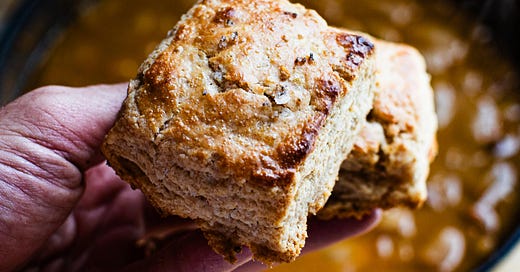


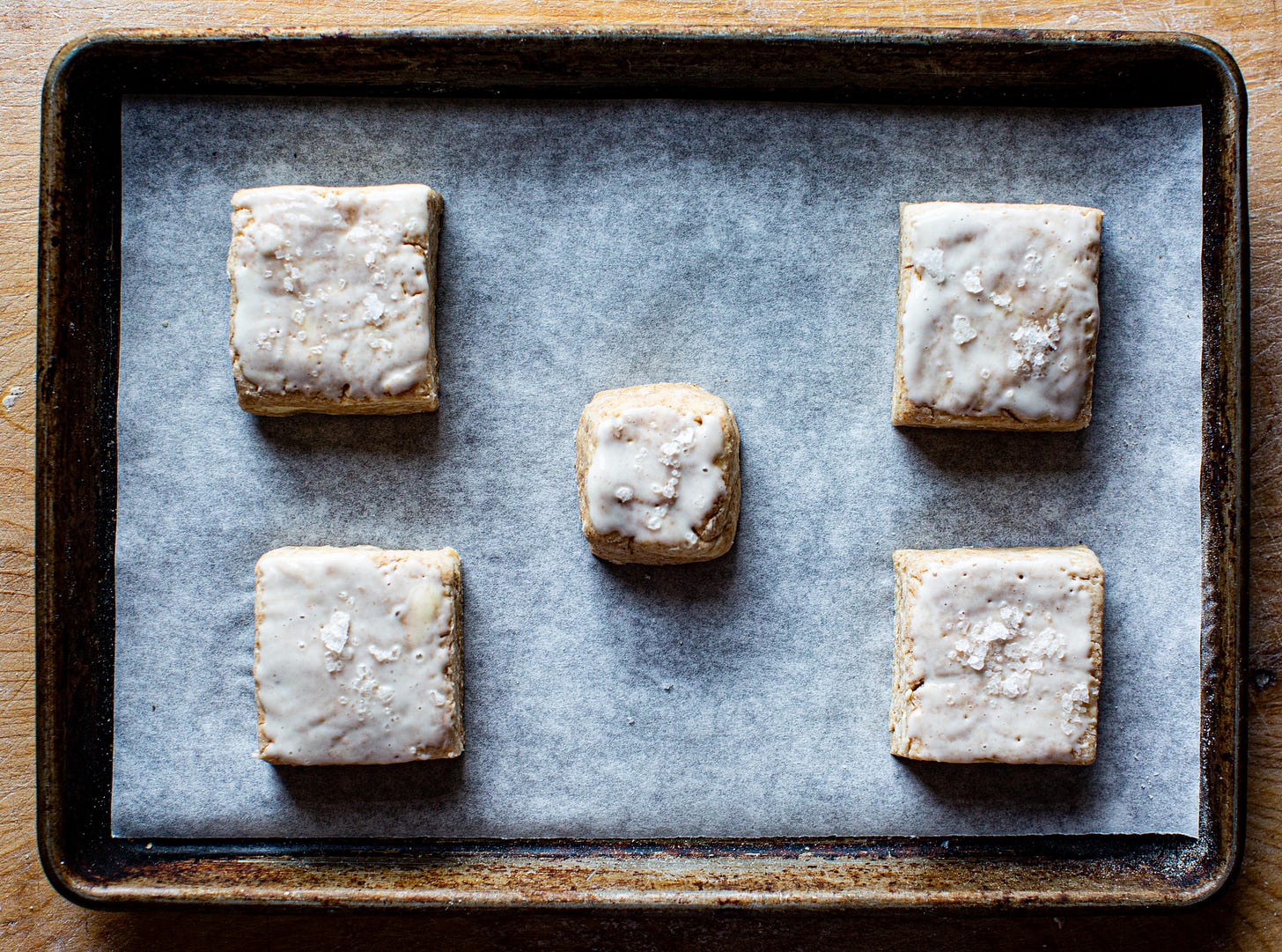
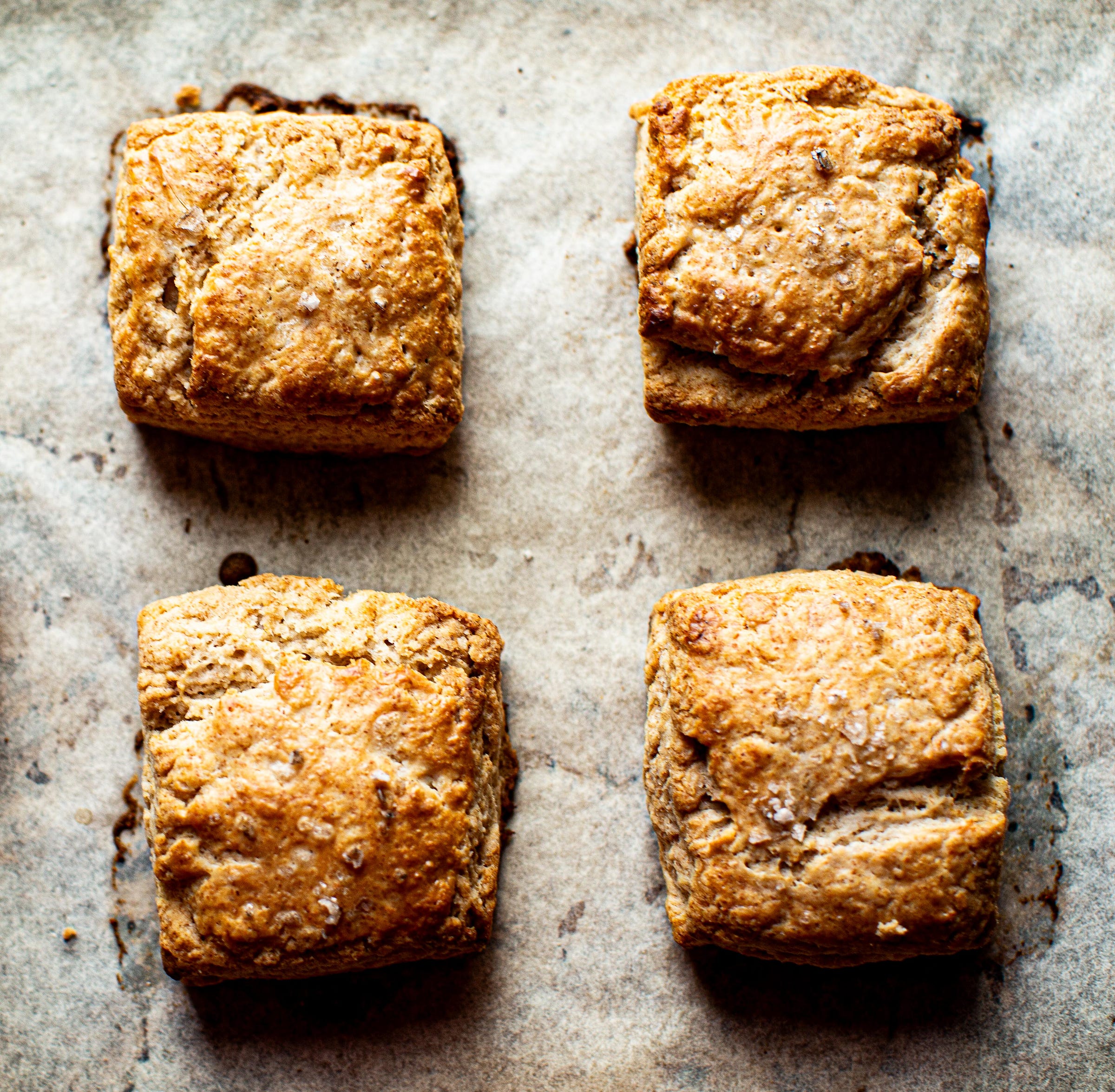
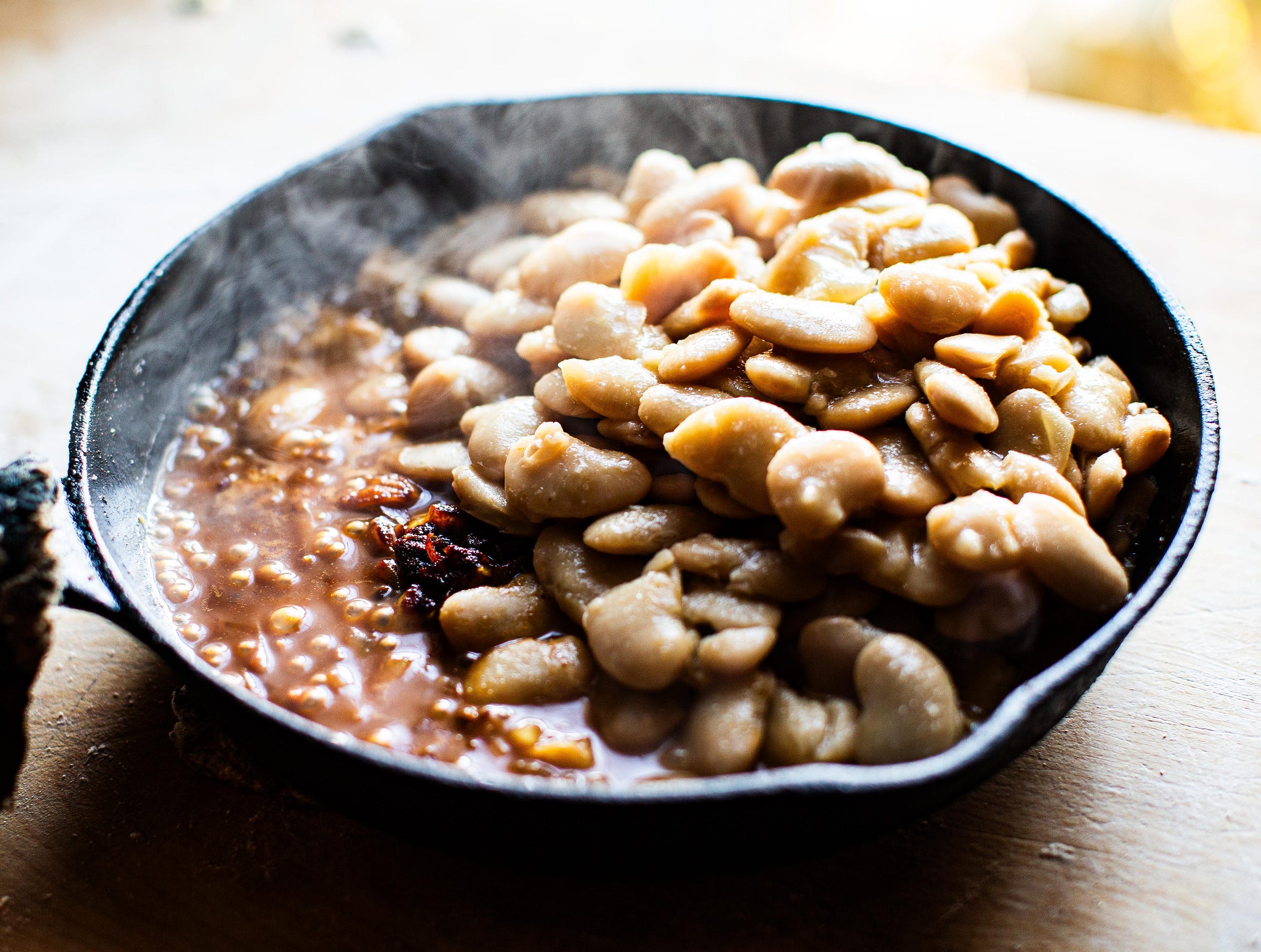
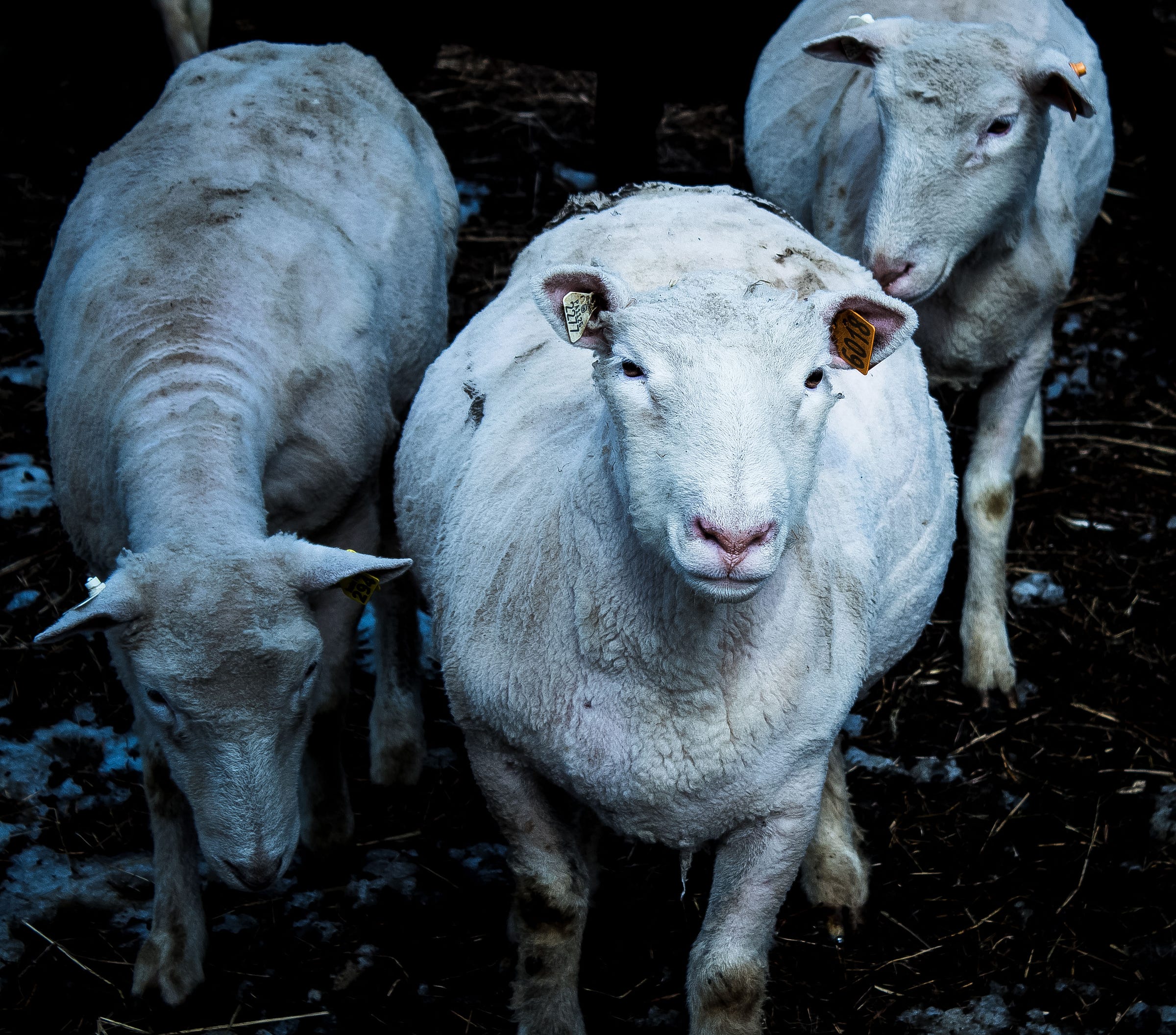
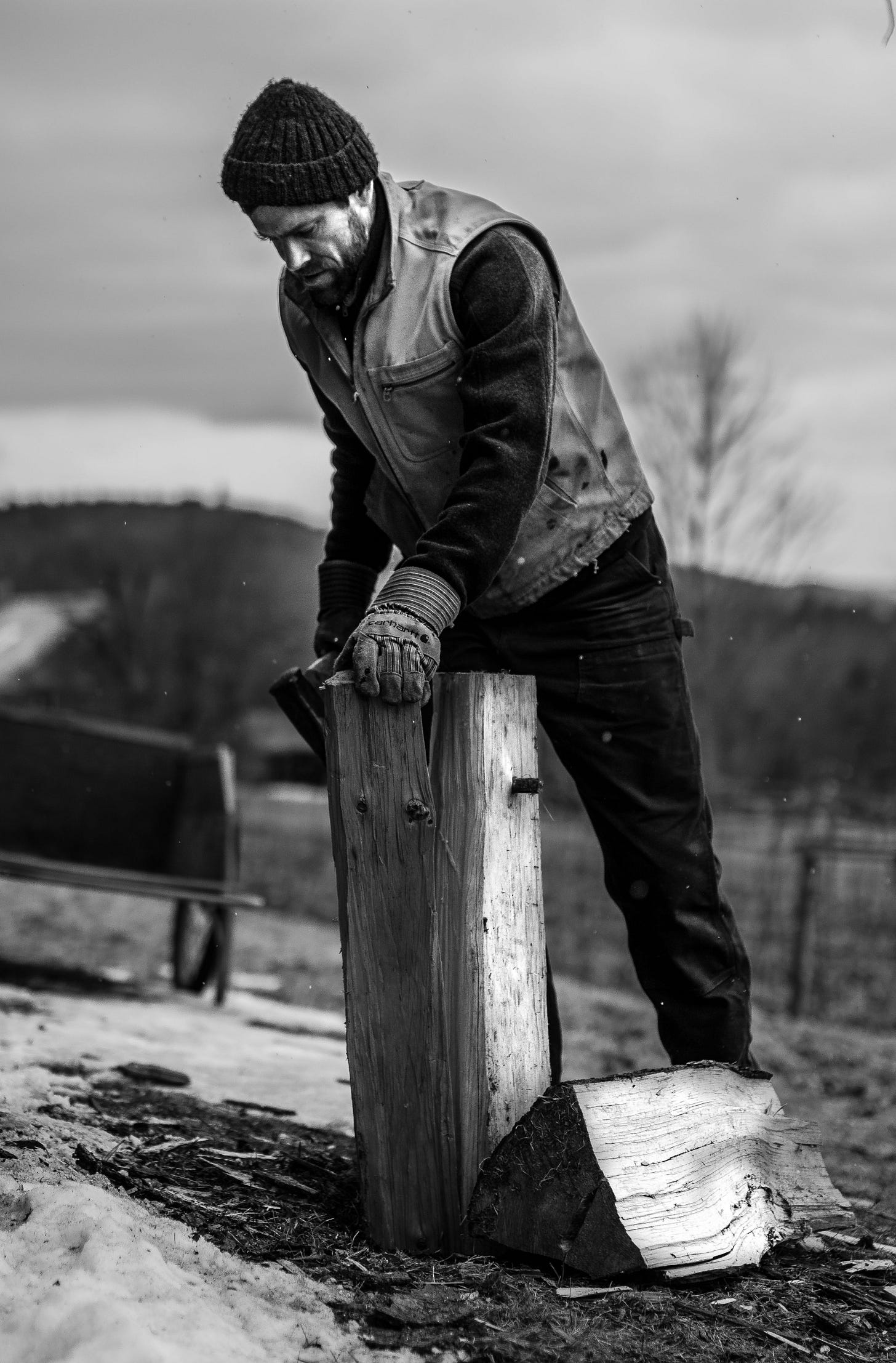
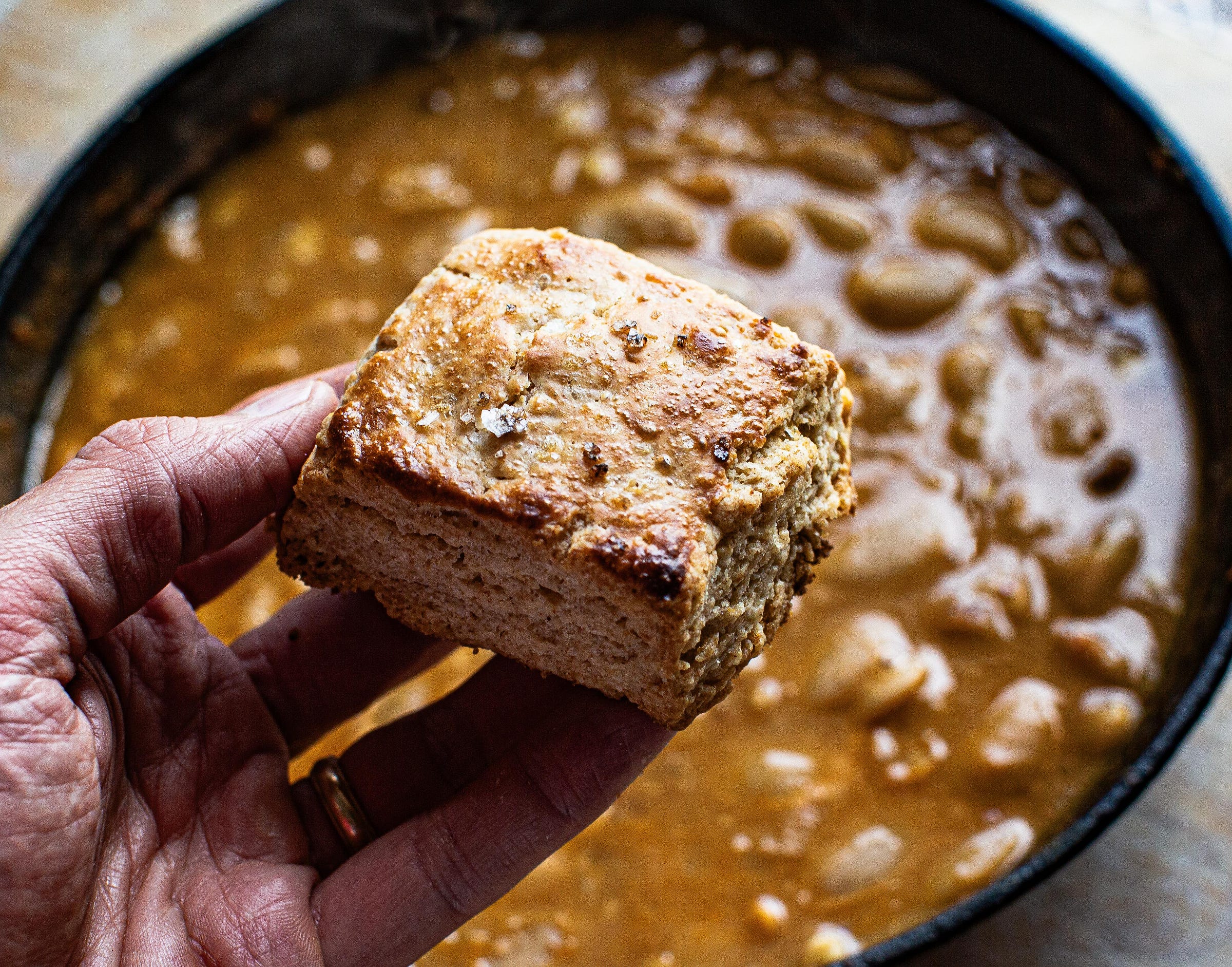
Your articles have been rekindled my heart toward the art of making food. Life has been a wildfire for a long time now, with breaks from time to time, but my relationship with providing meals for 7 hungry people (all with different tastes and sensory needs) has fallen by the wayside in the midst of putting out all the fire. I stumbled across your page recently and have been sucked into the life breathed and nuanced writing. Also, thank you for making your posts available to everyone, paid and unpaid. I would really love to afford to be able to financially support writers but I truly cannot as we live paycheck to paycheck right now. Having access to your words has been truly life giving and I am deeply grateful. I think fondly of my visit to Vermont, years ago, when a friend worked at KAF and I got to go inside and buy bulk bags of flour.
I did precisely as instructed, biscuits are 7 mins from done and my tummy's telling them to step on it. The meat conundrum is one I've been trying to work through my entire adulthood. I'm back to virtually vegetarian and it's very hard in the fall when I crave Irish stew and scallion soda bread. This is an intense and intimate experience you've made us privy to. We need more stories helping people comprehend the catastrophic impacts of industrial food production. (Have you seen Julius Roberts's beautiful cookbook and chronicle of relationships with land and animals?)
Biscuits done. Gorgeous of course. Thanks Martin 🙏🏻